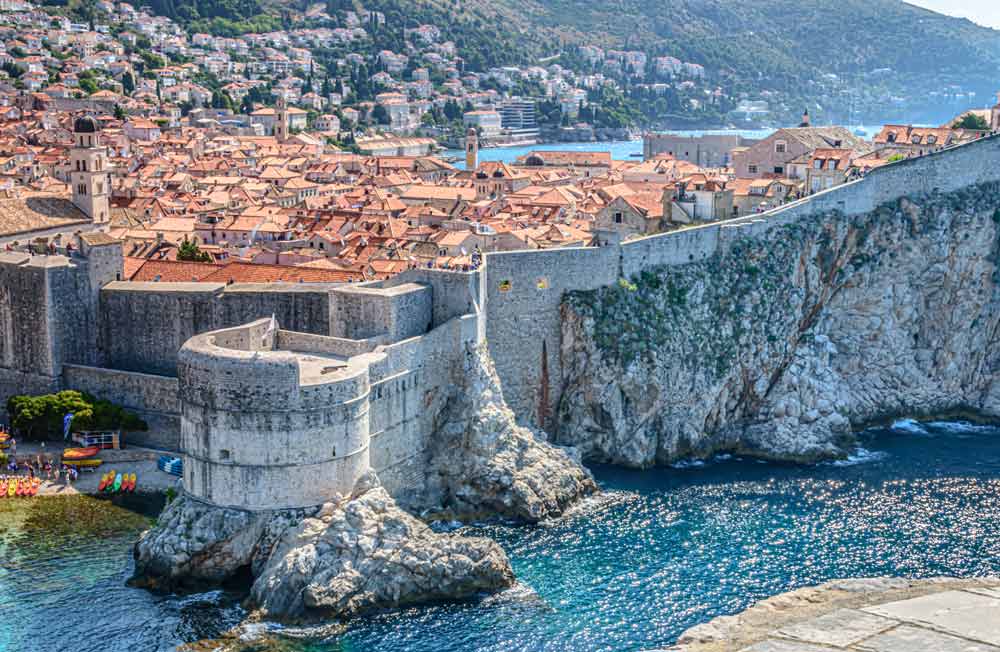Croatia, with its stunning coastline, historic cities, and vibrant culture, has become a beloved destination for travelers seeking a blend of natural beauty and rich heritage. Whether you’re drawn to ancient architecture, pristine beaches, or culinary delights, Croatia offers a diverse array of cities that promise unforgettable experiences. Here are some of the best cities to visit in Croatia:
1. Dubrovnik

Known as the “Pearl of the Adriatic,” Dubrovnik enchants visitors with its medieval city walls, narrow cobblestone streets, and breathtaking views of the Adriatic Sea. Explore the well-preserved Old Town, a UNESCO World Heritage Site, where you can walk along the ancient city walls, visit historical landmarks like the Rector’s Palace and the Cathedral, and enjoy panoramic vistas from Mount Srđ. Dubrovnik also boasts beautiful beaches, vibrant festivals, and a rich cultural scene.
2. Split
Split, Croatia’s second-largest city, is renowned for its impressive Roman architecture, most notably the UNESCO-listed Diocletian’s Palace. Built by the Roman emperor Diocletian in the 4th century, the palace complex is now a bustling hub filled with shops, restaurants, and even residential homes. Stroll along the waterfront promenade, explore the Cathedral of Saint Domnius and its bell tower, and soak in the lively atmosphere of Split’s Old Town. Nearby, Marjan Hill offers panoramic views and recreational activities amidst pine forests and Mediterranean flora.
3. Zagreb
As Croatia’s capital and largest city, Zagreb blends historic charm with modern vibrancy. The Upper Town (Gornji Grad) is a labyrinth of medieval streets, Baroque buildings, and charming cafes. Visit St. Mark’s Church with its colorful tiled roof, explore the Museum of Broken Relationships, and wander through Dolac Market, where locals gather to buy fresh produce and artisan goods. In the Lower Town (Donji Grad), you’ll find parks, museums, galleries, and bustling squares such as Ban Jelačić Square.
4. Rovinj
Nestled on the Istrian Peninsula, Rovinj captivates visitors with its romantic atmosphere, Venetian architecture, and picturesque harbor. Climb to the top of St. Euphemia’s Church for panoramic views of the town and surrounding islands, wander through narrow cobblestone streets lined with art galleries and boutiques, and relax at the pebble beaches nestled along the coast. Rovinj also serves as a gateway to the Istrian countryside, known for its vineyards, olive groves, and hilltop villages.
5. Zadar
Located on Croatia’s northern Dalmatian coast, Zadar combines ancient history with modern attractions. Explore the Roman Forum and St. Donatus Church, listen to the mesmerizing melodies of the Sea Organ, an architectural sound art installation powered by the sea waves, and admire the Sun Salutation, a solar-powered installation that creates a stunning light show at sunset. Zadar’s lively waterfront promenade, lined with cafes and bars, is the perfect place to enjoy fresh seafood and watch the sunset over the Adriatic Sea.
6. Pula
Pula, situated at the southern tip of the Istrian Peninsula, is famous for its well-preserved Roman amphitheater, one of the largest and best-preserved ancient arenas in the world. Explore the Arena, where gladiator battles once took place, visit the Temple of Augustus and the Roman Forum, and stroll through Pula’s Old Town with its Venetian architecture and bustling markets. Nearby, the Brijuni Islands National Park offers pristine nature, archaeological sites, and exotic wildlife.
Conclusion
Each of these cities in Croatia offers a unique blend of history, culture, and natural beauty, making them must-visit destinations for travelers exploring this enchanting country. Whether you’re drawn to ancient ruins, coastal landscapes, vibrant festivals, or culinary delights, Croatia’s cities promise a memorable journey filled with discovery and adventure. Plan your visit to Croatia and immerse yourself in the charm and allure of these remarkable cities that showcase the best of the Adriatic and Mediterranean regions.
